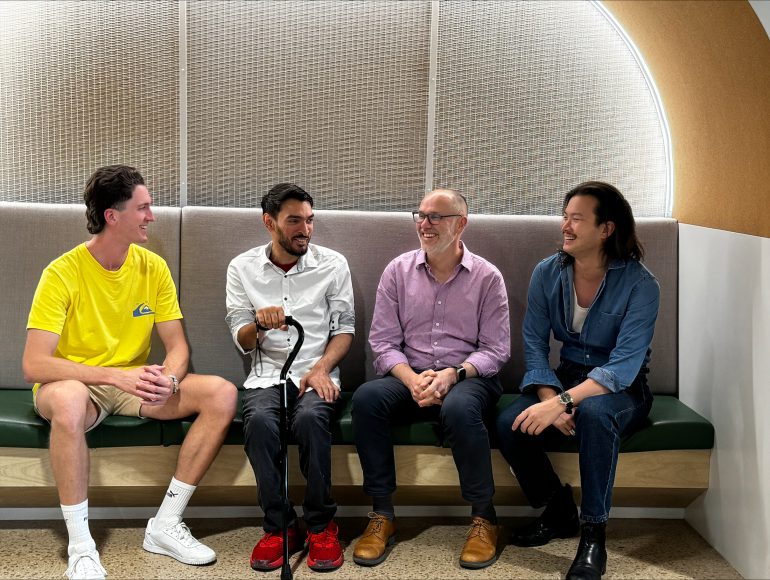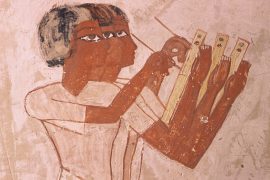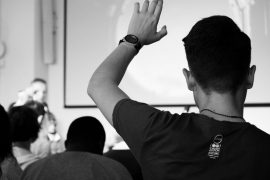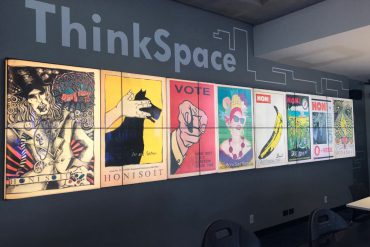At the intersection of lived experience and engineering innovation, a quiet revolution is unfolding. Working alongside people with lived experiences opens the minds of students to new perspectives and possibilities of the communities they live in and serve.
In this article, a rehabilitation engineering advisor and person living with cerebral palsy reflects on how working with engineering students is influencing how Sydney’s future engineers are building a more accessible world.
The classroom buzzed with the quiet excitement of possibility, and I could feel it too—like the anticipation of a smile before a meaningful conversation begins. Being here, sharing my experiences with these third-year University of Sydney Biomedical Engineering students, wasn’t just about explaining my daily challenges living with cerebral palsy; it was about offering them a window into my world. As I spoke, I saw many of them lean in with the kind of empathy that can’t be taught from a textbook. In those moments, when you begin to see ideas spark and minds open up, you realise that you are playing a small but important role in their education—not just as a guest, but as someone who could help them become more rounded and empathetic biomedical engineers.
As an advisor for the School of Biomedical Engineering’s Rehabilitation Engineering unit, I’ve had the opportunity to work closely with students who are eager to understand the real-world challenges faced by individuals with disabilities. This unit was designed to go beyond the theoretical aspects of assistive technology, immersing students in the realities that people like me face every day. By the second year of being an advisor, I noticed something that filled me with both pride and responsibility—a long line of students eager to talk to me, all wanting to choose my walking stick project. It became clear that they saw the value in learning from someone with lived experience.
Our students often impress me, each bringing a unique perspective to solving the same problem. After spending more time together, you see them starting to put themselves in my shoes, demonstrating a genuine effort to empathise. I think this kind of empathy is crucial for personal growth, regardless of age or experience, and it’s heartening to see young biomedical engineers embrace it here at the University of Sydney.
For many students, the unit inspires them to evolve their ideas or envision new ones in Honours or PhD projects. We’ve seen student projects develop into new collaborations across faculties, particularly with the Occupational Therapy program and the Susan Wakil School of Nursing and Midwifery, where interdisciplinary teams continue to work together to refine and expand their ideas. Spending time with the University’s future Biomedical Engineers still gives me that buzz that comes with new possibilities—the possibility that their excitement really does extend beyond their growth as students and into helping build a more accessible world. I’ve realised that when students work with people with lived experiences, it helps them broaden the technical and theoretical skills learnt, and that empathy can be developed in the classroom, and it involves working with people with different lived experiences.
What might you do?
- Invite guest speakers with lived experience of disabilities or other challenges. This can be a great way to introduce the idea of people-with-lived-experience and their stories to students;
- Design unit activities or projects that require students to think from the perspective of individuals with disabilities or other marginalised groups. This can be a good way of getting students to empathise the daily experiences and needs of end-users that may not be like them;
- Encourage collaboration across different faculties, such as engineering, occupational therapy, and nursing. Specifically, this helped us bring diverse perspectives across faculties into student projects. This might help students think more holistically about solutions that are informed by various fields of expertise.
The title image features (left to right): Jett van der Wallen, Ismail Sadozai (Rehabilitation Engineering Advisor) with Professor Alistair McEwan (Course Coordinator) and Michael Wong from the School of Biomedical Engineering Rehabilitation Engineering Team.





